Most international corporations such as Nike, Adidas, Lacoste, and Timberland vigorously harness Augmented Reality (AR) product configurators to reach their online and offline customers worldwide.
Previewing and trying products in AR before purchase and configuring items in AR product configurators before the actual buying make sales soar.
- SaleForce research reports that 75% of their clients are waiting for new technologies for better experiences;
- TechJury states that, by 2020, there is already 1 Billion clients who use AR and AR product configurators;
- Gartner follows TechJury, saying that, by 2020, 100 Million users shop with AR online and in-store;
- CitrusBits expects that, by 2022, there will be 3.5 users of AR and AR product configurators.
PwC UK economists published their report Seeing is Believing, which assures that, by 2030, Virtual and Augmented Reality can deliver a £1.4trillion boost to the global economy.
Jeremy Dalton, Head of VR and AR, PwC UK, addresses to businesses:
“Organizations that may have struggled with seeing how VR and AR fit into their business, need only look at the multiple existing and emerging examples in the research. Now is the time for them to think about how these technologies can improve their performance or they risk being left behind.”
He states that businesses have to no longer focus on software development but take a closer look at the design and concrete tasks that industries face every day. Employing VR and AR developers will reduce operational costs, letting the revenue flow into the companies. The revenue will depend on how customers experience the solutions that businesses offer. He advises starting a small project first to see how it works and further decide about investment.
A wide range of industry sectors already employs AR for better ROI:
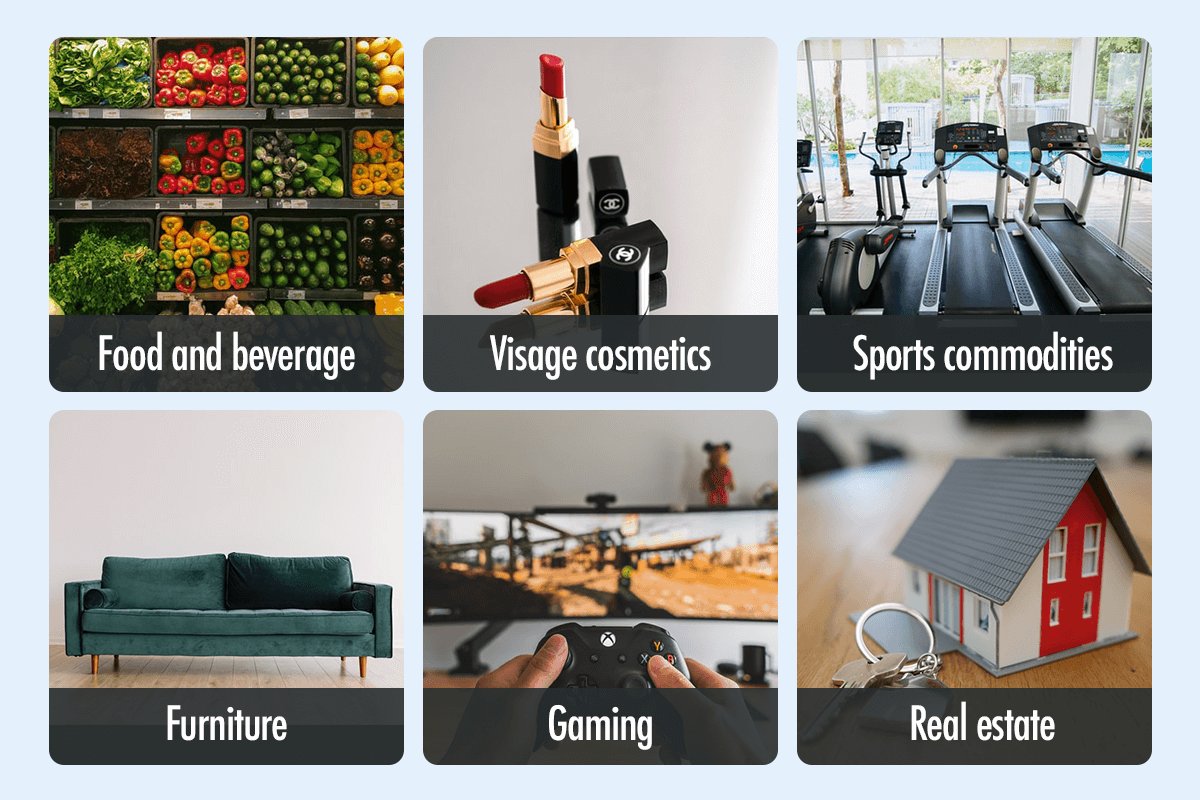
- Industrial design
- Food and beverage
- Sports commodities
- Fashion
- Visage cosmetics
- Furniture
- Real estate
- Gaming
Companies employ all types of technologies that science makes available today: Augmented Reality (adds to the scene that you see on your screen), Virtual Reality (replaces vision), and Mixed Reality (MR allows to project images in front of our eyes.)
Today, we can experience not only non-immersive worlds, for instance, in video games, but also semi-immersive worlds in training manuals and fully-immersive worlds in the entertainment context.
Sales managers and customers also meet these features in product configurators that allow them to create, customize, and showcase products online and in-store.
WebXR & AR-Powered Apps
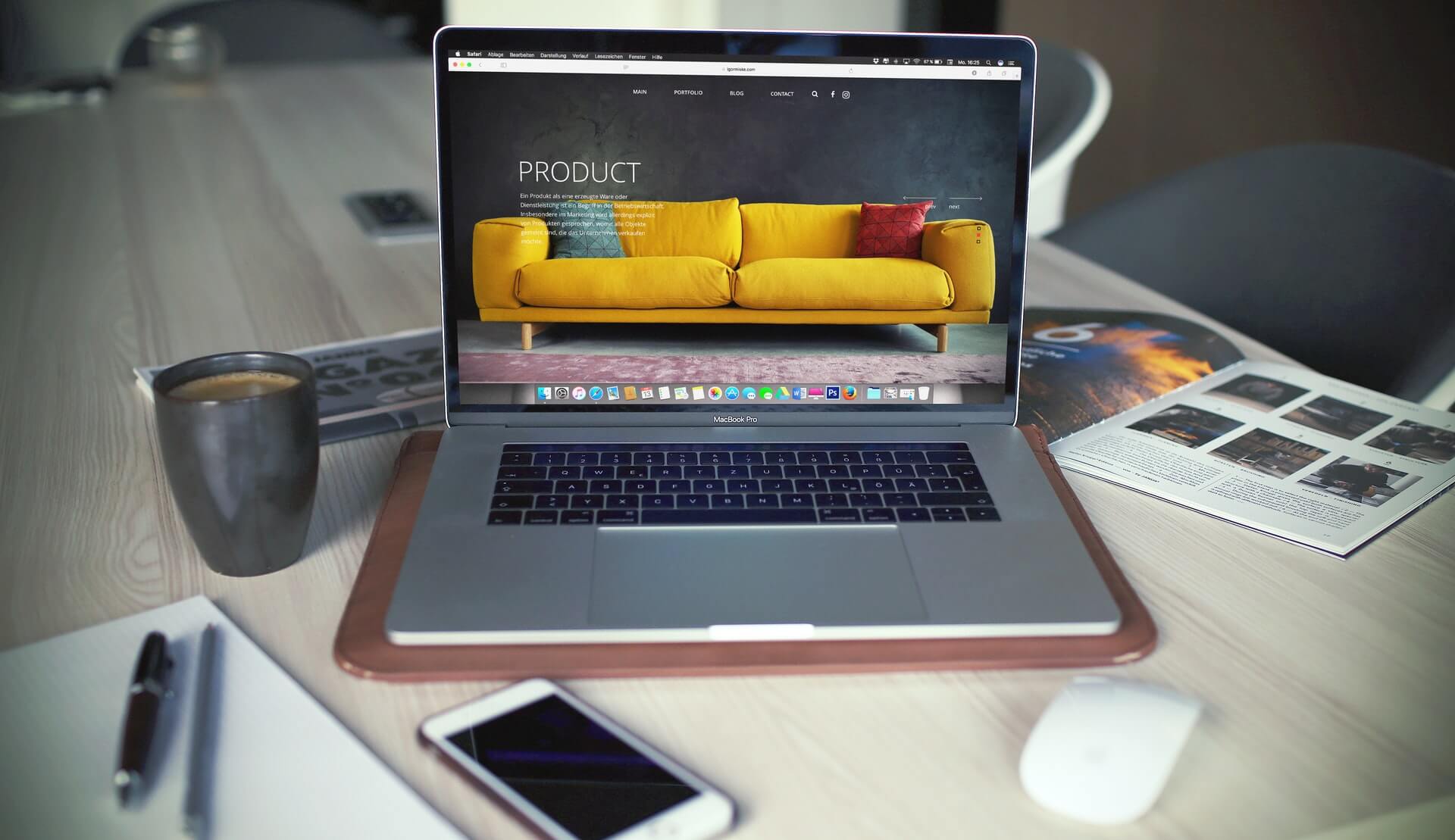
WebXR allows to create AR and VR experiences on the web. This is a set of standards that transfer 3D scenes from controllers to a wide range of devices that render these images creating Virtual and Augmented realities.
If you want to use the benefits of WebXR and AR on your devices, you will need 3D headsets, eyeglasses, or iPhone 11.0, Android 7.0+, and ARCore app installed on them. The headsets are used to navigate in the environment, and the eyeglasses show you the graphics that is transmitted from your device.
Basically, while shopping, buyers use product configurators on their mobile apps. They do not need any headsets or eyeglasses. Neither companies use those while configuring complex furniture on their desktops, for instance. However, customers and companies can need headsets and eyeglasses, for example, for virtual tours of a property or for a virtual test drive.
Read more about using WebXR.
What Can Businesses Showcase in Augmented Reality?
Depending on the industry, you can apply AR to any object and process:
- Real Estate and Construction – With AR, you can visualize services and create digital tours of properties;
- Retail –AR shopping malls and AR product configurators on par with simulators are the most popular applications of AR in Retail;
- Gaming – AR is used to create a gaming zone in an artificial environment;
- Industrial design – You can offer your sales managers AR CAD (computer-aided design) models that are able to show complex products as animated holograms;
- Education – Students will benefit from AR solutions that visualize complex objects or processes that they are studying;
- Foods – You can offer your guests to preview dishes in AR by a scan.
You can also collect information about your clients and their preferences when they use your AR and VR solutions:
- Improve your offline client service;
- Customize your clients’ online experience;
- Reduce your overhead & shipping costs.
Let’s see an example of an AR solution for the automotive industry and take a look at AR automobile configurator for sales departments.
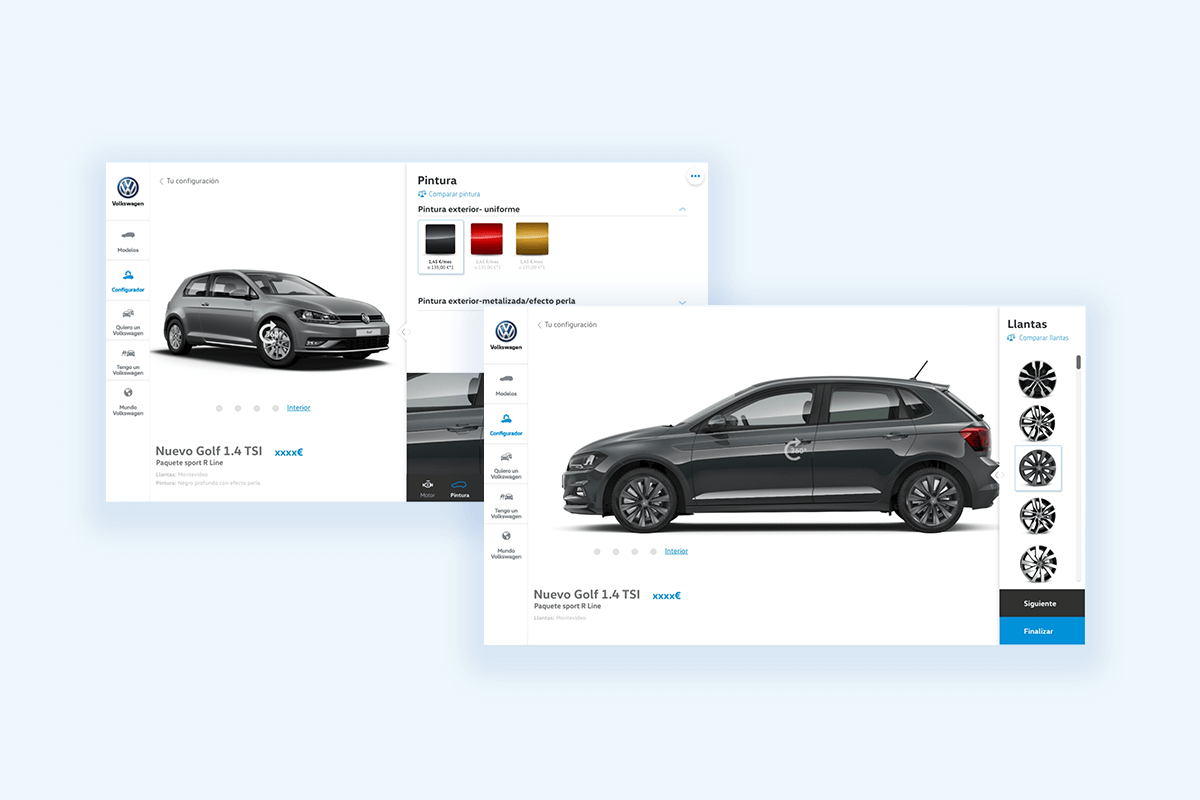
We can see the screens of a 3D vehicle. In this AR automobile configurator, customers can select a model by choosing its price and then modify its details – wheels, exhaust, and mirrors.
Configure and Preview Your Furniture in AR Product Configurators
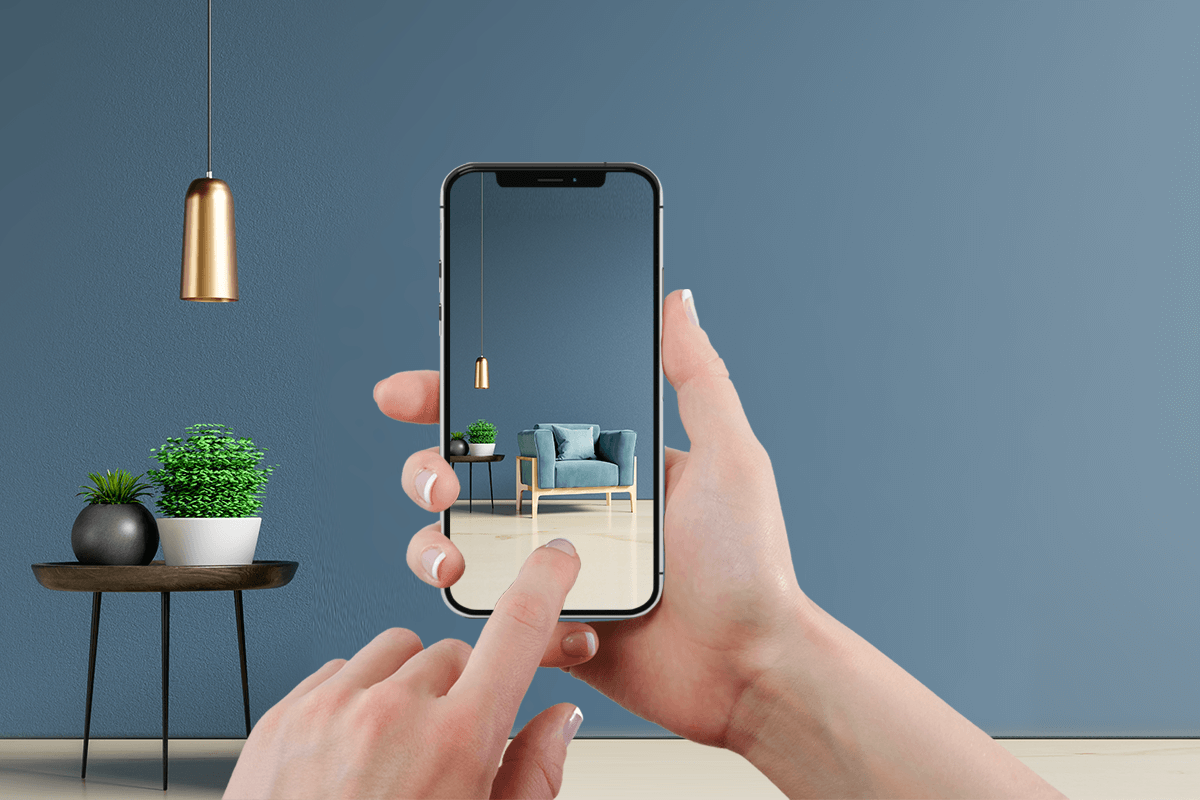
Many buyers seek to make their furniture shopping easier, for example, by previewing a furniture item in their own room style before buying. A long time ago, it was a pie-in-the-sky dream. This is one of many examples of how AR technology works for furniture sales.
Case 1
Designers and manufacturers of highly complex modular furniture can design and sell their products aided by AR product configurators that allow to design all the elements of a furniture piece, adjusting its color, material, lengths, widths, heights, set environment, and showing the tailored item to their clients. Users can also see the price of the configured object in real time.
This type of AR product configurator can be integrated into the manufacturer’s production systems. They can be paired with the manufacturer’s ERP, CPQ, CAD/CAM, and production systems.
Case 2
With a tablet, you can virtually place your just configured furniture in a place where you want it in your physical room. This solves many problems for buyers and inclines them to make a purchase decision. A developer may cheer a sales manager up by saying that they can upload their content in this application and use it for free.
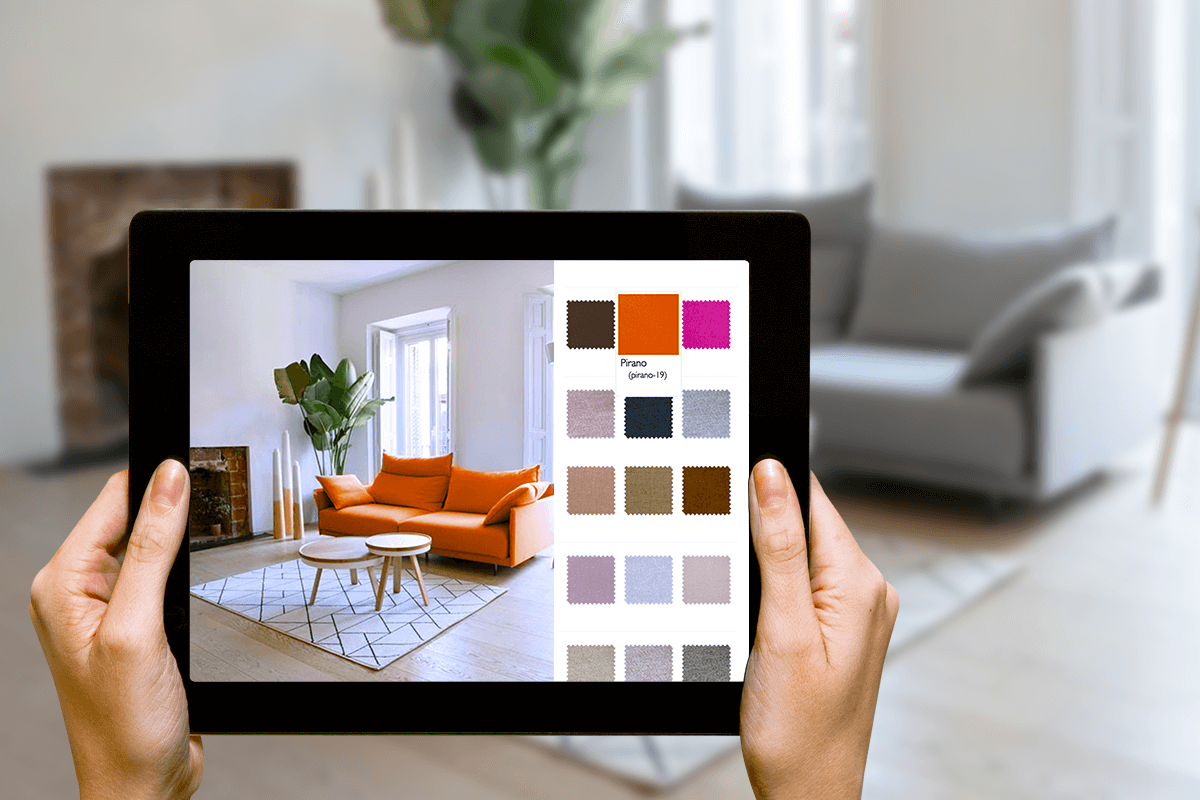
Case 3
Also, you can go further with AR product configurators and configure an entire room or a house, furnishing it and decorating in AR, for example, with the 3D AR Room configurators.
Case 4
Finally, sales managers can employ AR product configurators to create in-house interactive virtual tours that enable managers and customers to virtually walk and explore things, thereby easily making design decisions, for example, Interactive Virtual Tours application.
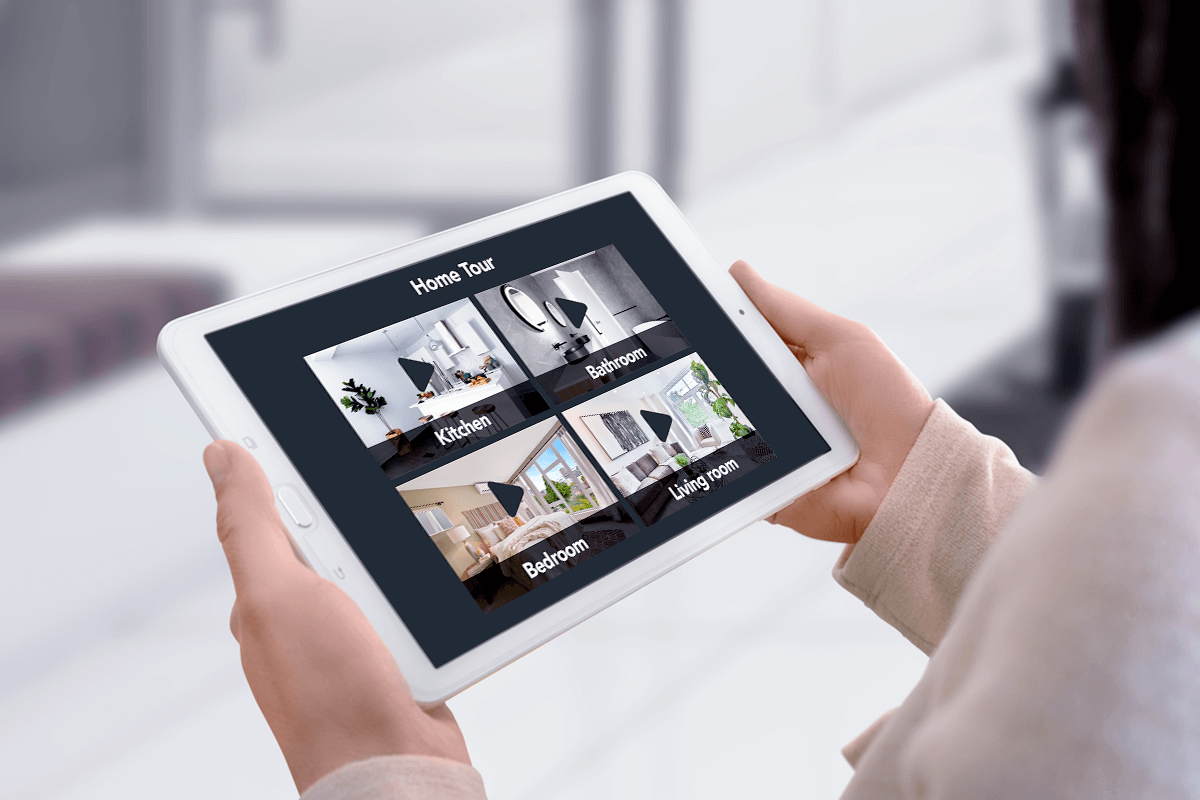
AR product configurators represent cross-platform AR applications for Web iOS and Android and use ARKit & ARCore, Unity engines, VR/AR, and 3D art.
They are an effective sales tool for manufacturers’ sales managers, dealers, interior design companies, real estate companies, realtor agencies, and marketing agencies. With AR product configurators, users can make 3D designs and presentations on computers, tablets, and mobiles while accessing the company’s 3D product storage.
Read more about using AR in Retail.
Preview Before Buying Retail and Sports Goods in AR Product Configurators
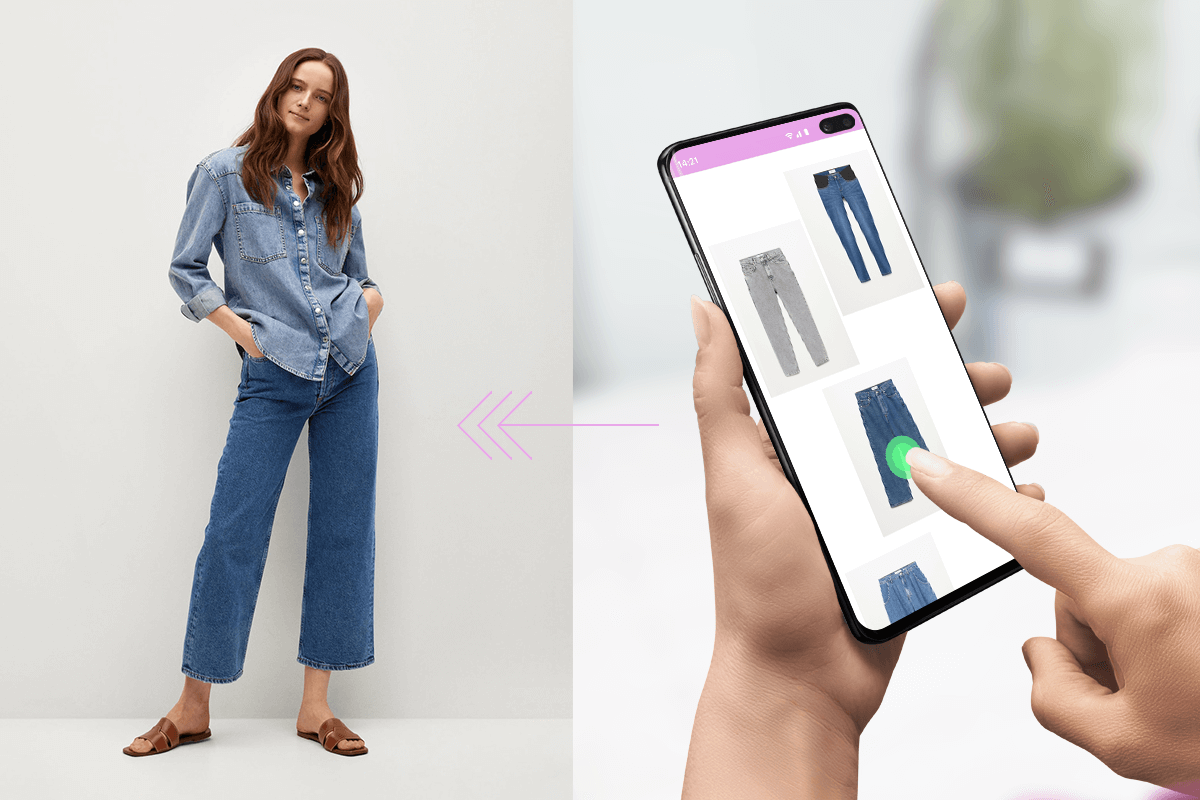
AR for retail businesses offers consumers AR apps that enable buyers, for instance, to step inside an AR dressing room, trying on clothes, and making purchases, never leaving their physical room.
Investing in AR in retail trends can reap a ripe harvest as AR offers many perks:
- Try before buying;
- Short buyer’s journey;
- Engagement;
- Visual context;
- Customer satisfaction;
- Self-service.
Technically, shoppers have to open an AR application on their device and scan the signage they are interested in. Then, the AR application shows the product details, such as colors to select and try on.
Case 1
AR product configurators are widely used in sports items retail. For instance, an AR 3D product configurator can facilitate large companies to sell their sports items, for instance, tennis rackets, visually showcasing them.
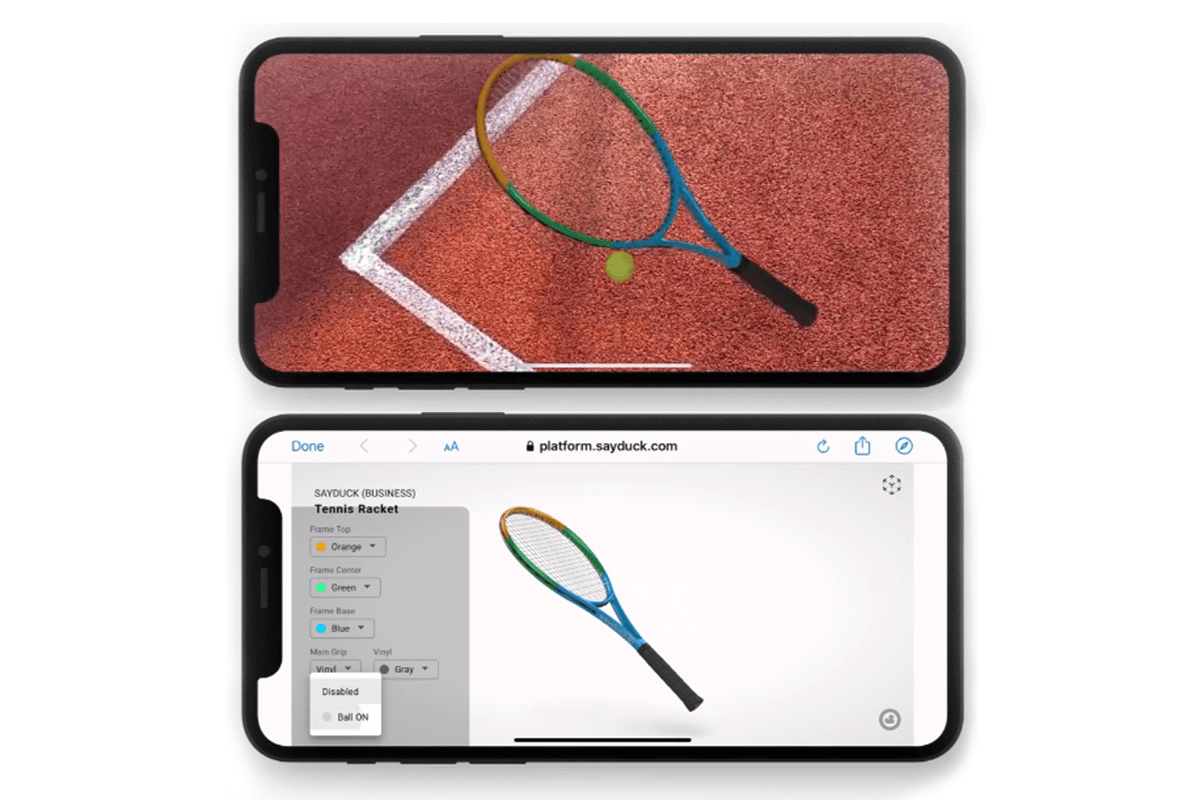
In s AR 3D product configurator for tennis rackets, customers can modify tennis rackets and play with a ball. Buyers can change:
- Frame top color;
- Frame center color;
- Frame base color;
- Main grip type;
- Grip color;
- Enable or disable a ball.
Case 2
Lacoste advertised their AR mobile application where buyers could virtually try on shoes. This application also created AR experiences with in-store signage and promotional postcards.
Read more about using XR in the Media and Entertainment industry.
Case 3
Not so long ago, Timberland started to offer their buyers a virtual in-store fitting room. Timberland displayed its products on its main sales window to drive foot traffic.
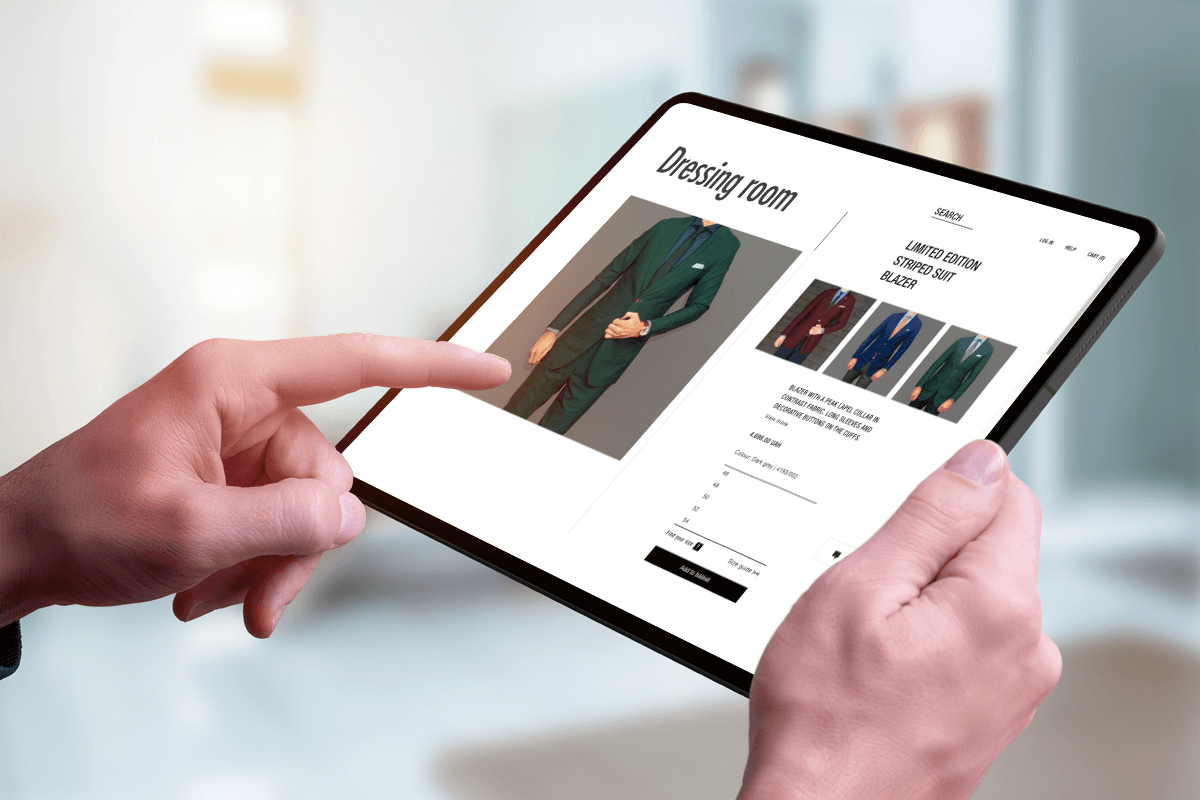
Case 4
Charlotte Tilbury Westfield London Magic Mirror uses AR to scan images of various faces and then show their brand’s iconic looks in under a minute. All a buyer has to do is to come to the store and sit in front of the “mirror.” As a result, it saves much time and finance on hiring visages to make real make-up to the clients in-store.
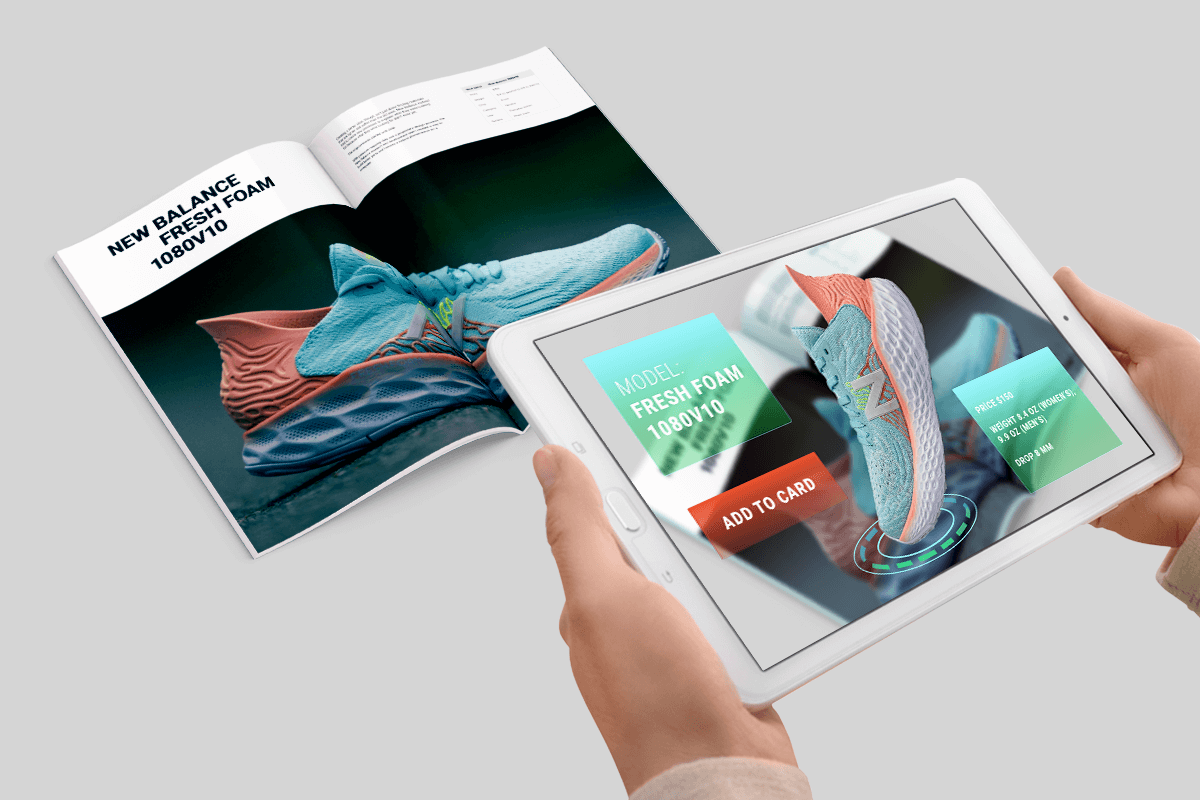
Conclusion
Augmented Reality product configurators for off- and online sales are an effective tool to reach customers that otherwise could not be approached and sell products that otherwise would hardly be sold.
With the pandemic restrictions, many customers prefer to shop online, buying from sellers who offer AR product configurators to try their products online before purchasing. In addition, AR product configurators can lure customers from competitors who provide only in-store experience. Moreover, if a sales manager offers an in-house VR test drive or tour of the property, this can significantly contribute to the purchase decision.
In some cases, to sell a product, you may need to tailor it first, as in sales of complex furniture. AR product configurators will look more convincing to your customers than a drawing.
International corporations have been offering AR product configurators to their customers for years. And since these technologies are becoming in demand and more affordable in price, this tendency is spreading to SMEs as well.




